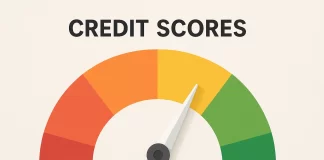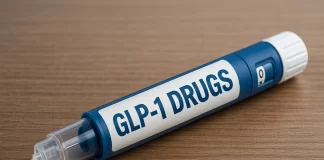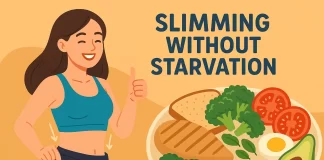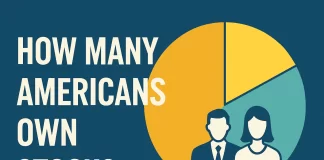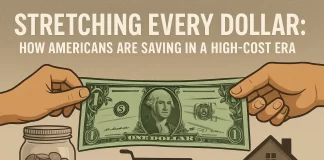Americans.com is your go-to resource for clear, practical information that empowers you to make better decisions—about your finances, your health, your future, and everything in between. We cut through the noise with straightforward facts, helpful insights, and real-world advice you can actually use. No hidden agendas, no hype—just a commitment to helping everyday Americans stay informed, confident, and in control.
- Money
- Health
- Hair Loss Treatments: What Really Works and the Best Options to Consider Now!
- Fitness Trackers: A Comprehensive Guide to the Best Devices for Monitoring Health and Wellness
- Best Online Methods to Quit Smoking: A Comprehensive Guide
- Hearing Aids: What to Know, What Works, and the Best Options Available
- Cord Blood Banking: A Growing Investment in Health and Hope
- Diet Plans: Finding the Right Fit for Your Health Goals
- DNA Testing: Unlocking the Secrets of Your Genetic Makeup
- Best Online Contact Lens Companies
- Invisible Braces: Clear Choices for a Straighter Smile
- Medical Alert Systems: Life-Saving Tech That’s Smarter Than Ever
- Stairlifts: The Mobility Upgrade Giving Americans Their Homes Back
- Online Pharmacies: Are They Safe, Legit, and Worth It?
- STD Testing: The At-Home Health Check More Americans Are Turning To
- Shopping
- Technology
- Biographies
- Money
- Health
- Hair Loss Treatments: What Really Works and the Best Options to Consider Now!
- Fitness Trackers: A Comprehensive Guide to the Best Devices for Monitoring Health and Wellness
- Best Online Methods to Quit Smoking: A Comprehensive Guide
- Hearing Aids: What to Know, What Works, and the Best Options Available
- Cord Blood Banking: A Growing Investment in Health and Hope
- Diet Plans: Finding the Right Fit for Your Health Goals
- DNA Testing: Unlocking the Secrets of Your Genetic Makeup
- Best Online Contact Lens Companies
- Invisible Braces: Clear Choices for a Straighter Smile
- Medical Alert Systems: Life-Saving Tech That’s Smarter Than Ever
- Stairlifts: The Mobility Upgrade Giving Americans Their Homes Back
- Online Pharmacies: Are They Safe, Legit, and Worth It?
- STD Testing: The At-Home Health Check More Americans Are Turning To
- Shopping
- Technology
- Biographies
- Money
- Health
- Hair Loss Treatments: What Really Works and the Best Options to Consider Now!
- Fitness Trackers: A Comprehensive Guide to the Best Devices for Monitoring Health and Wellness
- Best Online Methods to Quit Smoking: A Comprehensive Guide
- Hearing Aids: What to Know, What Works, and the Best Options Available
- Cord Blood Banking: A Growing Investment in Health and Hope
- Diet Plans: Finding the Right Fit for Your Health Goals
- DNA Testing: Unlocking the Secrets of Your Genetic Makeup
- Best Online Contact Lens Companies
- Invisible Braces: Clear Choices for a Straighter Smile
- Medical Alert Systems: Life-Saving Tech That’s Smarter Than Ever
- Stairlifts: The Mobility Upgrade Giving Americans Their Homes Back
- Online Pharmacies: Are They Safe, Legit, and Worth It?
- STD Testing: The At-Home Health Check More Americans Are Turning To
- Shopping
- Technology
- Biographies
- Money
- Health
- Hair Loss Treatments: What Really Works and the Best Options to Consider Now!
- Fitness Trackers: A Comprehensive Guide to the Best Devices for Monitoring Health and Wellness
- Best Online Methods to Quit Smoking: A Comprehensive Guide
- Hearing Aids: What to Know, What Works, and the Best Options Available
- Cord Blood Banking: A Growing Investment in Health and Hope
- Diet Plans: Finding the Right Fit for Your Health Goals
- DNA Testing: Unlocking the Secrets of Your Genetic Makeup
- Best Online Contact Lens Companies
- Invisible Braces: Clear Choices for a Straighter Smile
- Medical Alert Systems: Life-Saving Tech That’s Smarter Than Ever
- Stairlifts: The Mobility Upgrade Giving Americans Their Homes Back
- Online Pharmacies: Are They Safe, Legit, and Worth It?
- STD Testing: The At-Home Health Check More Americans Are Turning To
- Shopping
- Technology
- Biographies
© 2025 Americans.com. All Rights Reserved.




